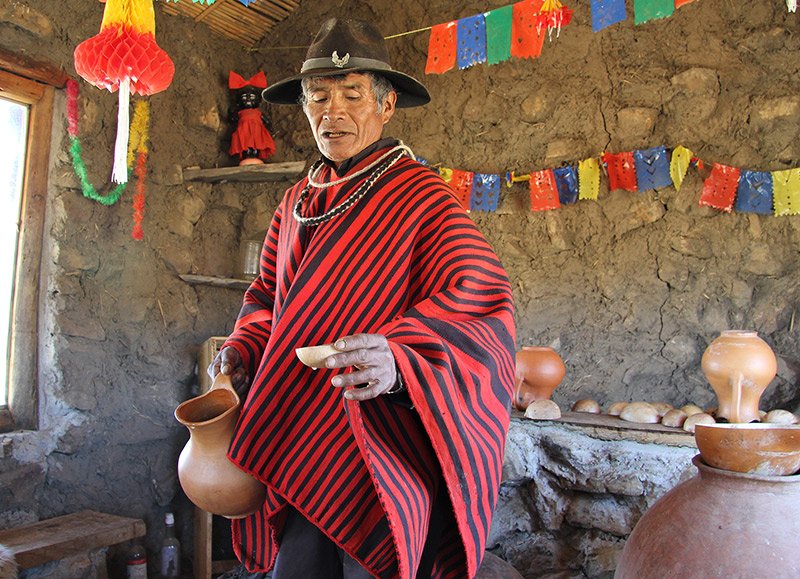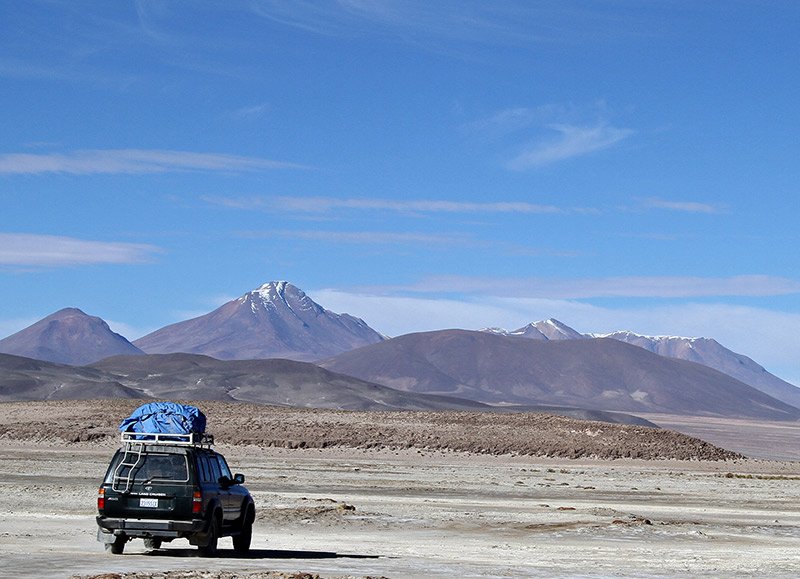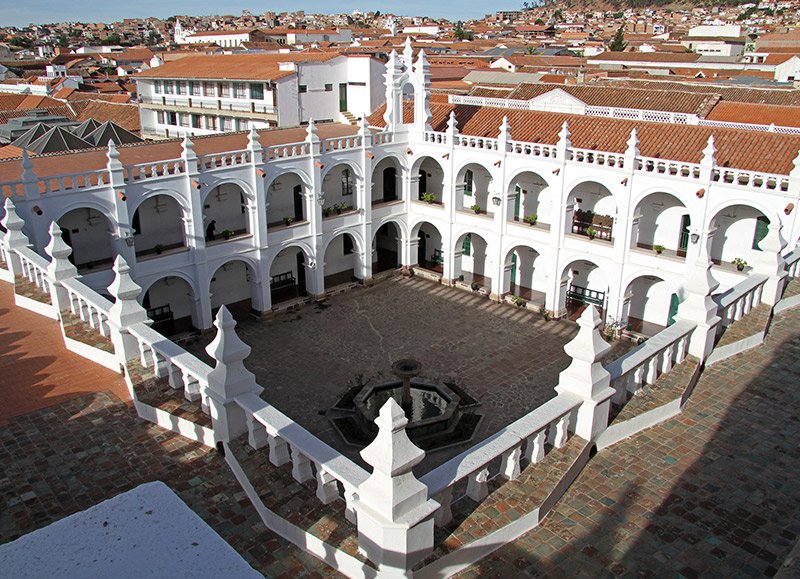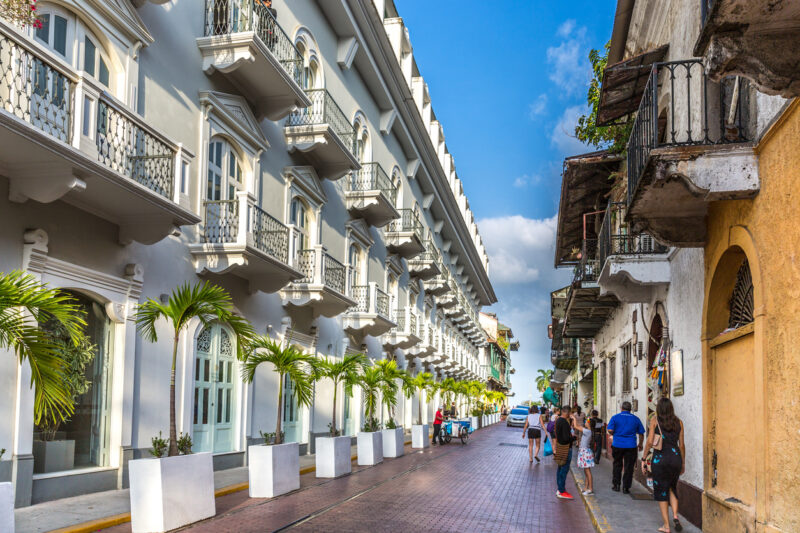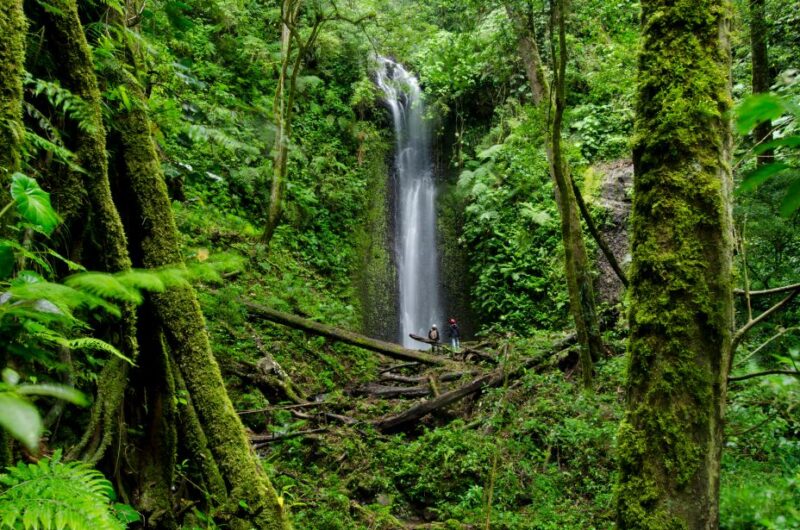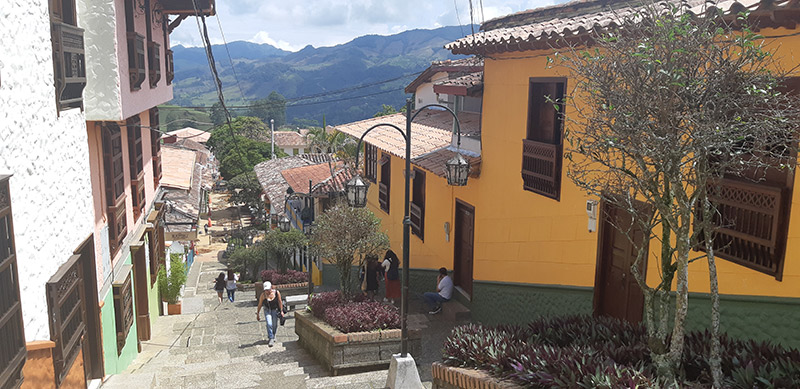| Tour Code | Start | End | Trip Status | Pricing Per person |
|---|---|---|---|---|
| BJA/180526 |
May 18, 2026
Monday |
Jun 01, 2026
Monday |
Guaranteed |
£3,295.00
Single Room Supplement: £530.00 |
| BJA/240826 |
Aug 24, 2026
Monday |
Sep 07, 2026
Monday |
Guaranteed |
£3,295.00
Single Room Supplement: £530.00 |
| BJA/210926 |
Sep 21, 2026
Monday |
Oct 05, 2026
Monday |
Guaranteed |
£3,295.00
Single Room Supplement: £530.00 |
| BJA/170527 |
May 17, 2027
Monday |
May 31, 2027
Monday |
Guaranteed |
£3,295.00
Single Room Supplement: £530.00 |
| BJA/200927 |
Sep 20, 2027
Monday |
Oct 04, 2027
Monday |
Guaranteed |
£3,295.00
Single Room Supplement: £530.00 |
From the Lowlands to the High Andes
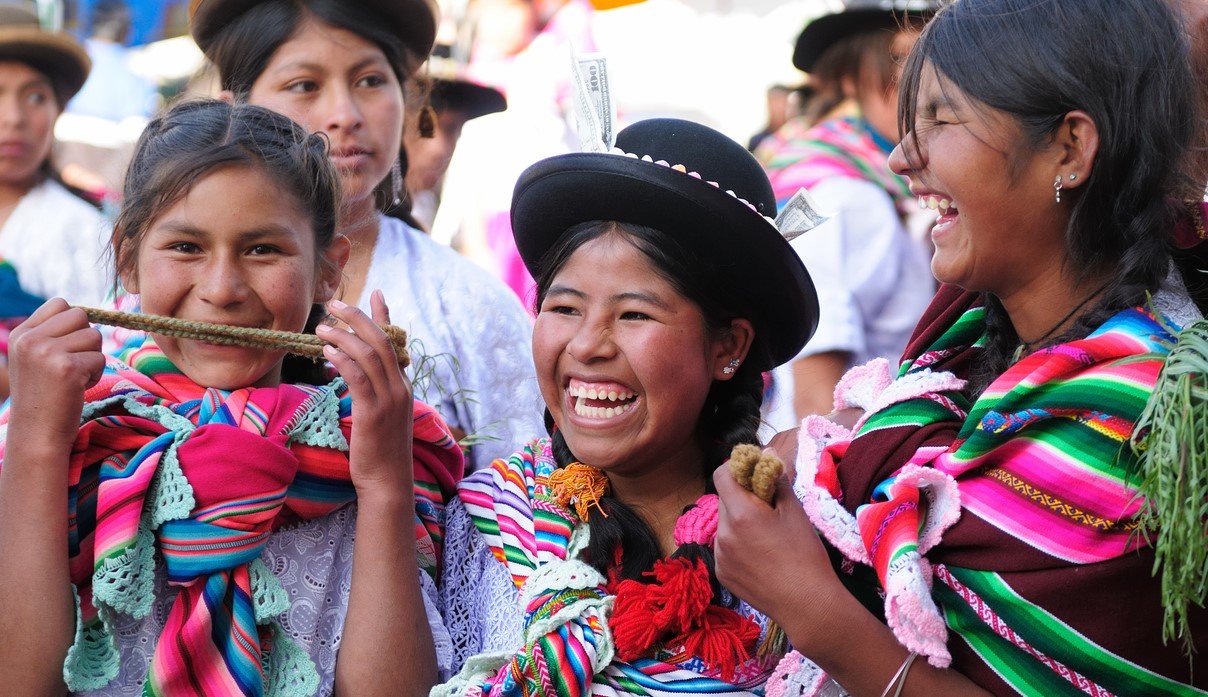
Often overlooked in favour of its more famous neighbour Peru, Bolivia offers the adventurous traveller just about all you could want from a trip to South America, without the numbers of tourists found in other areas. On this two week trip we journey through a variety of landscapes from the steamy jungles of the Amazon to the desolate and foreboding salt flats of Uyuni, nestled up against the border with Chile. We visit the lovely Jesuit churches and pretty villages of the Chiquitania, region and the colonial cities of Sucre and Potosi with their amazing architecture, which transports us back to the days of the conquistadors. We also take time to delve into ancient cultures at Tiwanaku, and embark on an adventure through the mountains of the High Andes, where the barren landscapes have to be seen to be believed. Bolivia is a hotbed of nature, adventure and culture that should be high on the list for any prospective visit to South America.
Arrival and departure transfers
Overland transport throughout with professional driver
Domestic flights as shown in the itinerary
All accommodation
Services of English-speaking guide / tour leader
Meals as listed, B – Breakfast, L – Lunch, D – Dinner
Entrance fees for sites listed as part of the itinerary
International flights (, contact , us, for expert advice and a quote)
Any airport taxes (except when included as part of domestic airfares)
Travel Insurance
Visa – when required
Drinks
Items of personal nature
Tips (Discretionary)
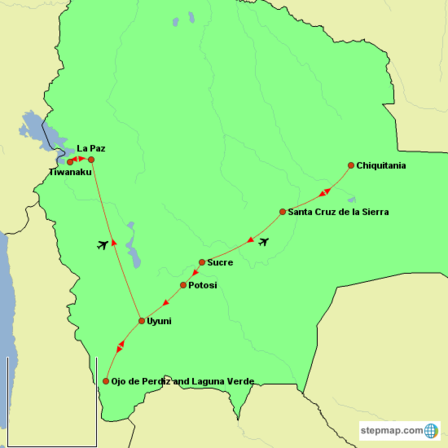
The Bolivia – From the Lowlands to the High Andes tour is a 15-day small group journey that explores Bolivia’s diverse landscapes and cultural heritage. Starting in Santa Cruz, it visits the Jesuit missions of Chiquitania before heading to the colonial cities of Sucre and Potosí, and the remarkable dinosaur footprints at Cal Orck’o. The tour continues to the vast Uyuni Salt Flats, the ancient ruins of Tiwanaku, and the vibrant city of La Paz in the Andes. It offers an immersive experience of Bolivia’s history, nature, and traditions, suited to travellers with moderate fitness.
Explore the Uyuni Salt Flats
Experience the surreal beauty of the world’s largest salt flats, where the vast white expanse creates mirror-like reflections and otherworldly scenery.
Discover the Dinosaur Footprints at Cal Orck’o
Walk alongside the largest collection of dinosaur footprints ever discovered, etched into ancient rock walls near Sucre.
Visit the Colonial Cities of Sucre and Potosí
Step back in time in Bolivia’s UNESCO-listed cities, filled with striking colonial architecture and rich historical narratives.
Journey Through the Jesuit Missions of Chiquitania
Uncover Bolivia’s lesser-known past through the beautifully preserved Jesuit churches and mission towns of the eastern lowlands.
Wander the Ruins of Tiwanaku
Explore the fascinating pre-Incan archaeological site of Tiwanaku, one of the most important civilisations of the Andes.
Download the Information Pack
To download the tour full dossier, which includes a complete day-by-day itinerary breakdown and detailed tour information, fill in the details below.

Foreign Office Travel Warnings Before booking your tour, please familiarise yourself with the country specific information provided by the UK’s Foreign, Commonwealth and Development Office (FCDO) – www.gov.uk/foreign-travel-advice. This includes important information such as latest immigration requirements, and details of any travel advisories. We constantly monitor the advice posted by the FCDO. In particular we will always advise clients of any travel warnings. At present there are no warnings against travel to the parts of Bolivia that we visit on this tour. Please feel free to contact us should you have any specific concerns or would like to know in detail what measures are being taken to ensure visits remain trouble free and without incident. It should be noted that this information applies to British citizens. Other nationals are asked to check the current position of their respective government. Visa Information At the time of writing British and Australian nationals do not require a visa for a tourist visit to Bolivia. US Nationals will require a visa. For further details please visit the applicable website shown below. British Nationals – www.gov.uk/foreign-travel-advice US Nationals – travel.state.gov/content/travel/en/international-travel.html Australian Nationals – www.smartraveller.gov.au Other nationals should check the latest requirements with the authorities in their home country, or with the destination’s nearest embassy or consulate. Should you require any documentation to support a visa application, such as a letter of invitation, upon request this will be provided by Undiscovered Destinations after receipt of your balance payment. As it is the travellers’ responsibility to ensure that they meet all entry requirements it is essential that you check the rules and any other conditions at the time of booking and again when making your balance payment. In addition, we would strongly advise that you make a final check around two weeks before your arrival. This is important as requirements can change at short notice. Undiscovered Destinations, when possible, will provide guidance about entry rules, but in the first instance please contact the relevant authorities, including the applicable embassy or consulate for assistance. Passports It is your responsibility to ensure that you are in possession of a full passport, valid for at least six months after the date of return to your country. We strongly advise that your passport contains a minimum of two blank pages, as this may be a requirement of the local immigration authorities. In addition, certain countries will stipulate that the two blank pages are opposite each other. If you are unable to meet these requirements, you may be refused boarding by your airline or denied entry by the immigration authorities. For specific information about the requirements for your destination please check with the country’s embassy or consulate. Alternatively, UK citizens can visit www.gov.uk/foreign-travel-advice. Vaccinations & Protection As with travel to most parts of Latin America, we strongly recommend that you contact your doctor’s surgery or a specialist travel clinic for up-to-date information, advice, and the necessary vaccinations. For a visit of less than one month you maybe advised to have immunisations against the following: Diphtheria and Tetanus, Hepatitis A, Typhoid, Meningitis. The use of a DEET-containing insect repellent may also be recommended. The legal status and regulation of some medicines prescribed or purchased in your home country can be different in other countries. If you’re travelling with prescription or over-the-counter medicine, read this guidance from NaTHNaC on best practice when travelling with medicines. For further information on the legal status of a specific medicine, you’ll need to contact the embassy, high commission or consulate of the country or territory you’re travelling to. Travel Insurance It is a condition of booking with Undiscovered Destinations that you have adequate valid travel insurance. It is your responsibility to arrange appropriate travel insurance and ensure you have read and understood the full terms and conditions of your travel insurance policy to ensure that you are covered for all activities you intend to undertake whilst on the tour, including all optional activities. Your Insurance Policy must fully cover you for medical expenses (including cover for Covid-19 conditions) and emergency repatriation to your home country and be valid for the entire duration of your holiday. Local Conditions When travelling to our destinations, many of which are underdeveloped and untouristed by mainstream tourism, a good deal of patience and a sense of humour is an important attribute. This will help you to cope with problems such as ageing or poor infrastructure and when maintenance may not be as high as we would always like. The choice of appropriate accommodation in some towns and cities (particularly the smaller places) can be limited, and standards of both service and maintenance can be less than polished. Guides and other service providers in some of our destinations do not always have the decades of collective practice and experience that their counterparts in more developed countries can draw upon. Although we will always try and resolve any issues as quickly as possible, on occasions there may be some shortcomings which no matter how hard we try will be unavoidable.
